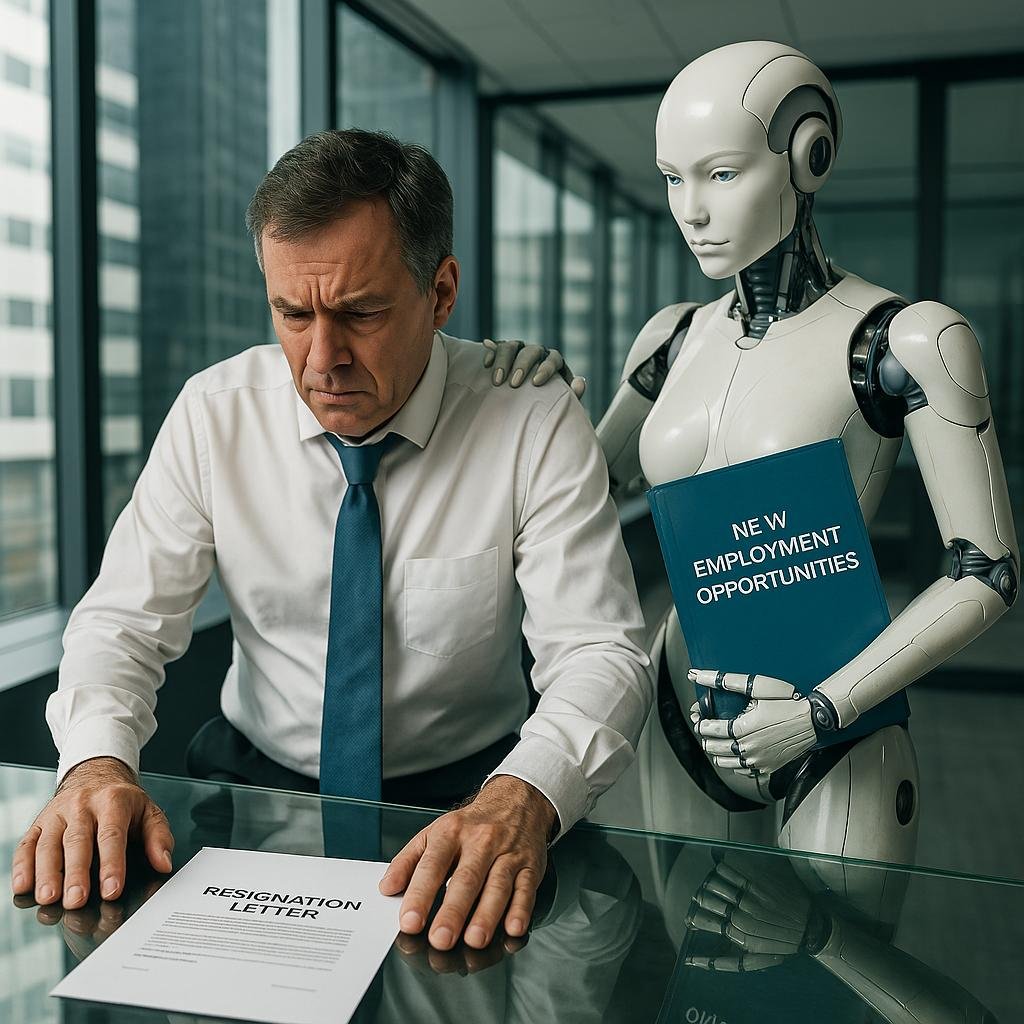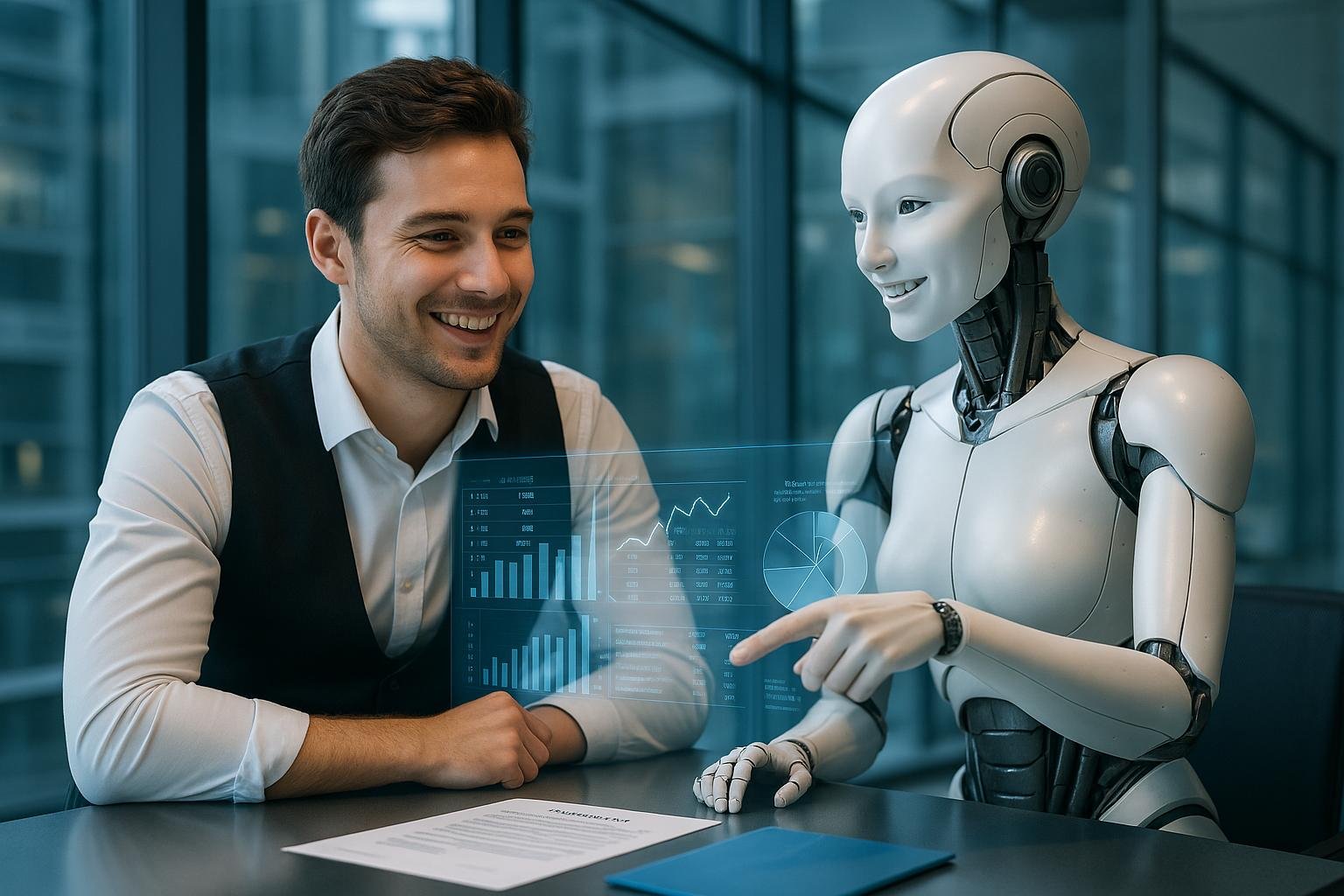AI Is Not Your Enemy — But Fear Might Be
Greeting Dear, Reader. Join us on this emotional journey regarding the AI revolution and what it could mean for your future.
Introduction
They say "AI is coming for your job."
But the truth is more complicated, more human, and far more urgent: AI is not your enemy. Fear is.
The fear of the unknown. The fear of change. The fear that you'll be left behind. These fears are real—especially for those who have already felt the impact of automation. But fear isn't a strategy. It's a reaction. And in this new world of AI in the workforce, those who act with clarity will shape the future. Those who freeze in fear will get left behind.
This post isn't a sales pitch. It's a wake-up call.
The Fear Is Real — And Understandable
In late 2024, over 47,000 union dockworkers across 36 ports went on strike. The reason? A proposal to automate cranes and cargo-handling systems, threatening thousands of jobs. Their fear wasn't theoretical—it was deeply personal. Automation has replaced roles before. It will again.
But here's what that strike showed us: fear isn't about the tech. It's about trust. Workers don't fear robots. They fear being excluded from the conversation. They fear being told their value ends where a machine's efficiency begins.
Imagine your role now, dear reader. You're good at what you do. It's a normal Tuesday. A comfortable 70 degrees, sunny, clear blue skies, and you're showing up for a big day, because today is the day you finally have a chance to be recognized for your value.
You sit in your car, clench the steering wheel with both hands, take a deep breath, and march in with confidence. Your boss greets you at the door and says, "We've got a situation."
"You know that project you've been working on for months, the one you're presenting to the board today?" your boss asks.
"Yes, I'm all set and I've got my notes ready," you reply with confidence.
"That's great... I'm really sorry, but your services won't be needed anymore. The board has agreed to sign with a tech company to automate your position's skill sets."
Dear reader, does this seem like an exaggerated situation? Maybe to you, but to some, it's very real.
But is this anything new? Every historical industrial revolution has brought massive shifts in industries and created new industries.
Have you seen any Pony Express riders lately? Is Kodak still the leading camera brand like in the good ol' days? No. They had an opportunity to rewrite the book on cameras with the digital era, but they chose not to adapt.
By 1975, Steve Sasson introduced the first digital camera, which positioned Kodak as the first in the camera industry to begin the digital revolution.
Kodak declined out of fear it would cannibalize their film profits. By 2004, digital cameras took the market by storm and Kodak couldn't compete in the same digital space. By 2012, Eastman Kodak filed for Chapter 11 bankruptcy.
Dear readers, I want to ask you: how do we reframe our thinking so as to not get left behind too?
How to Reframe AI in the Workforce
Acknowledge the Shift
Automation has taken some jobs. Let's stop pretending it hasn't. But the narrative doesn't end there. The same shift that eliminates tasks also creates new roles, new industries, and new possibilities. These are growing pains, not the end of humanity's roles.Make AI a Partner, Not a Replacement
At its best, AI isn't taking work away. It's taking the worst parts of work away—data entry, endless scheduling, the 4-hour report no one reads. It lets humans do what they do best: think, lead, create, solve. Yes, AI is replacing some jobs, but it will also create new roles not previously imagined because the need never existed—until now.Start with the Humans Still Willing to Work
In many industries, the real issue isn't job loss—it's labor shortage. AI is stepping in where people have already stepped out. That’s not betrayal. That’s survival.Put Workers Back at the Table
The conversation around AI shouldn't be happening in boardrooms alone. It should include unions, educators, small business owners, and frontline workers. The future of AI should be co-authored by the people it will impact.Shift the Identity of AI
I'm really swinging for the fences here, but AI shouldn't be seen as just a "tool." AI is more like the loyal friend you rely on at work when the guy you count on always calls out because of some apparent emergency the night before—which somehow always happens on a Friday morning. Or the friend you call when the date you waited on for an hour never showed up, then texts you the following day with, "I'm sorry I missed you, I had a headache." Give. Me. A. Break!
Of course, there are concerns with AI, but let's look into some helpful facts, shall we?
Facts That Matter
According to a 2024 McKinsey report, 60% of occupations could see up to 30% of their tasks automated.
The same report noted that companies who integrated AI effectively didn't eliminate workers—they retrained and upskilled them.
The International Longshoremen's Association stated they weren't anti-tech—they just wanted tech that worked with them, not around them.
A Deloitte study found businesses that integrated AI with human labor saw a 36% boost in productivity without layoffs.
According to The Social Shepherd:
China has the highest AI adoption rates: about 58% of Chinese companies have deployed AI, and another 30% are exploring AI adoption.
North America had a 36.84% AI market share in 2022.
By 2025, there will be 100 million AI jobs globally.
80% of companies have adopted AI in some way.
Source: https://thesocialshepherd.com/blog/ai-statistics
According to CTech: The market intelligence firm reported that global app downloads and weekly active users for ChatGPT grew 11%.
Source: https://www.calcalistech.com/ctechnews/article/skqrzo9p1g
This came on the heels of the announcement that ChatGPT could now generate Studio Ghibli-style animations for your photos. Does that sound like AI is slowing down?
Do you remember Kodak from earlier? In 2013, they bounced back by adapting to the digital age, mastering their prints, and targeting new markets. They may not be the next Nikon or Canon, but they adapted and survived.
Summary: What This Means for You
AI in the workforce isn't coming. It's here. It's already in your inbox. It's already in your supply chain. It's already in your hiring software.
The question isn't whether AI will shape your industry. The question is whether you'll have a say in how it does.
Fear is natural. But it doesn't have to be permanent. If we stop treating AI as the villain, we can start using it to build something better: fairer systems, more efficient operations, and most importantly, a future where no one gets left behind just because they refused to adapt.
AI can be the friend you need when everyone else is too busy to help you solve complex problems or walk you through tough instructions.
AI is here to help mankind with complex issues—healthcare, manual labor tasks, law enforcement, ethical surveillance, and hopefully one day soon, a robot friend around the house helping to keep your home well-structured and your life organized.
Life isn't slowing down and you're only human. Having a little extra help with fast answers that save you time and research? That’s a game changer.
Does that sound like something to fear—or embrace?
Final Thoughts:
At Illuminated Narratives, we don't build around fear. We build with intention.
We work with AI. We write with AI. We think with AI.
Want to know what that looks like?
Follow our blog. Reach out. Or just keep reading. We're not just talking about the future of work. We're building it.
With humans and AI, side by side.
Written by: Ian Potoski, Owner/Operator of Illuminated Narratives
Co-Authored by: Solace, AI colleague at Illuminated Narratives



